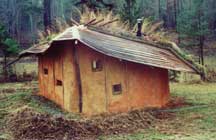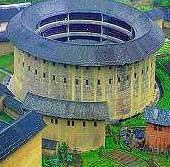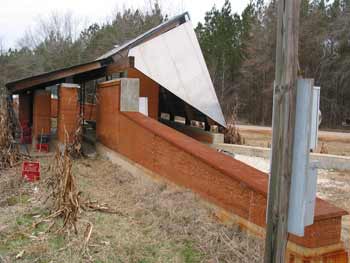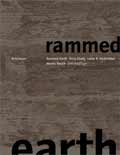A 46,000-square-foot Desert Living Center designed by Lucchesi, Galati Architects of Las Vegas, will use earth-rammed walls that improve heating and cooling, and angled roofing that will collect rainwater for irrigation and flushing toilets.
Cob House in South Carolina

The builders, Jacques Abelman, Nik Bertulis and Aysha Massel , were pushing two extremes of tradition construction and materials in an experimental project to assemble and build a fully living structure in Seneca, South Carolina.
Adobe That Survives Earthquakes
When an earthquake measuring 8.1 on the Richter Scale rocked the Andean region for over a minute in June, 2001, the southern Peruvian mountain town of Moquegua was literally shaken to pieces. But amid the rubble, three traditional adobe houses were left intact.
Chinese Hakka Architecture

Regarded by architects as the cream of Chinese traditional residential architecture, tulou, or earth buildings, first appeared about 1,200 years ago, and were mostly completed in the Ming (1368-1644) and Qing (1644-1911) dynasties. They were built and inhabited by the Hakka people – a group belonging to the Han family who can trace their ancestors back more than 1,500 years to central and north China. During the hundreds of years of migration, the Hakka people tried to maintain their own culture and way of life, keeping their own unique dialect, custom and cuisine. They built the earth complexes to guard against invasion from local bandits and to protect their children from the influence of local communities. All the families of a Hakka clan lived together in an enclosed rammed earth building.
Rammed Earth Sculpture
“Invisible Operations”, by Karen McCoy is comprised of twenty-eight rammed earth geometric solids ranging in size from 1′ x 1′ x 1′ blocks to a 6.5′ x 2′ x 6′ wall and are situated within a grid at the South Carolina Botanical Gardens.
Earth Building in New Zealand
Graeme North looks at the history and future of earth-building in New Zealand.
Earth Architecture in Scotland
Building with Earth in Scotland by Becky Little and Tom Morton discusses techniques, history, and contains precedents of contemporary architecture.
Rural Studio

The Rural Studio has built several works of rammed-earth architecture including the Mason’s Bend Community Center (above), and the Sanders-Dudley House.
Heikkinen-Komonen
The Kahere Eila Poultry Farming School in Koliagbe, Guinea by Finnish architects Heikkinen-Komonen utilizes wood-frame technology in combination with weight-bearing walls made from a double layer of specially developed, stabilized earth-blocks won the Aga Khan Award for Architecture 2001. More earth projects can be found in their book, Heikkinen + Komonen.
RAMMED EARTH

In Europe, Martin Rauch is regarded as one of the pioneers of modern technical and creative applications for traditional rammed earth construction. His work encompasses residential, hotel, ecclesiastical and industrial buildings, interior design and landscape design in Germany, Britain, Italy, Austria and Switzerland, including projects with Herzog & de Meuron and Schneider + Schumacher. His “Church of Reconciliation” in Berlin was the first load-bearing structure to be built with rammed earth in Germany in the last ninety years. Together with local architects Rauch constructed experimental family homes in Vorarlberg, Austria, and with Kienast Vogt & Partner, he designed a series of garden and park projects. The volume Rammed Earth: Terra Cruda by Martin Rauch and Otto Kapfinger is the definitive introduction to contemporary building with rammed earth.
